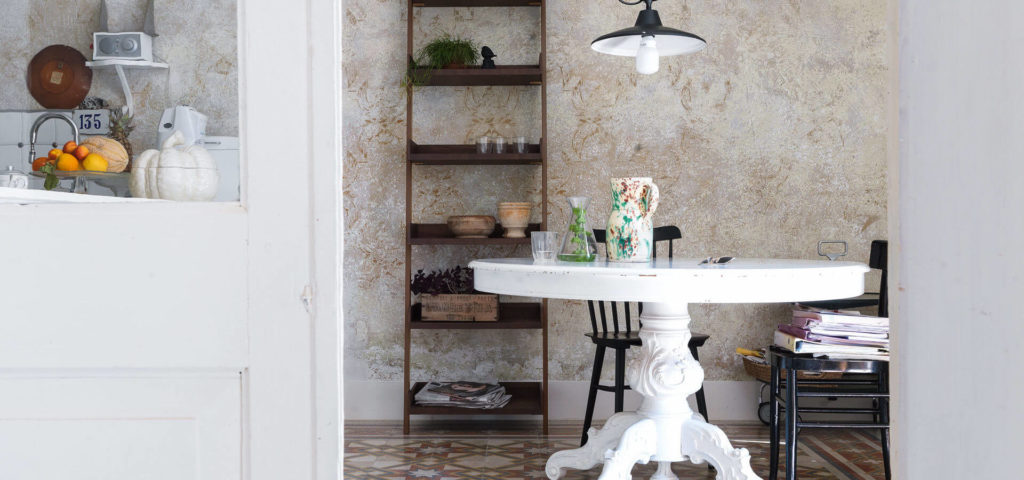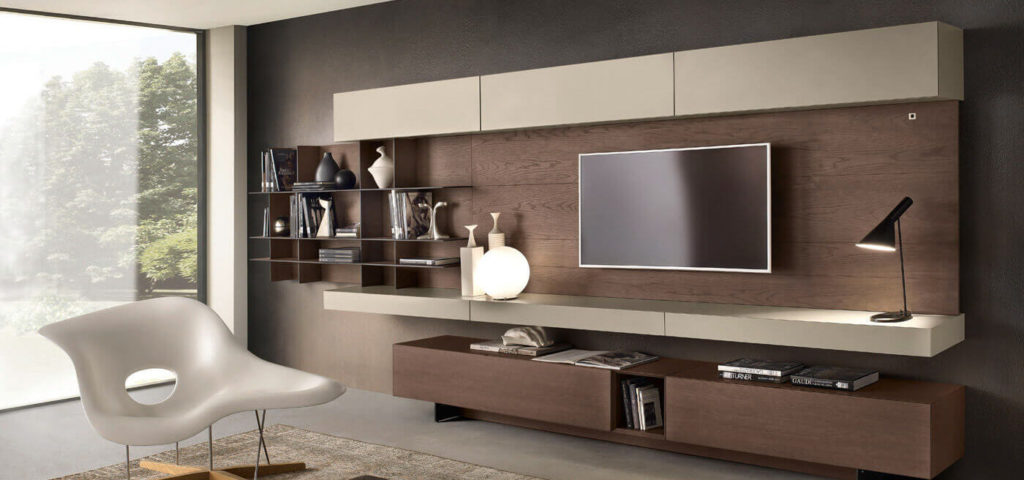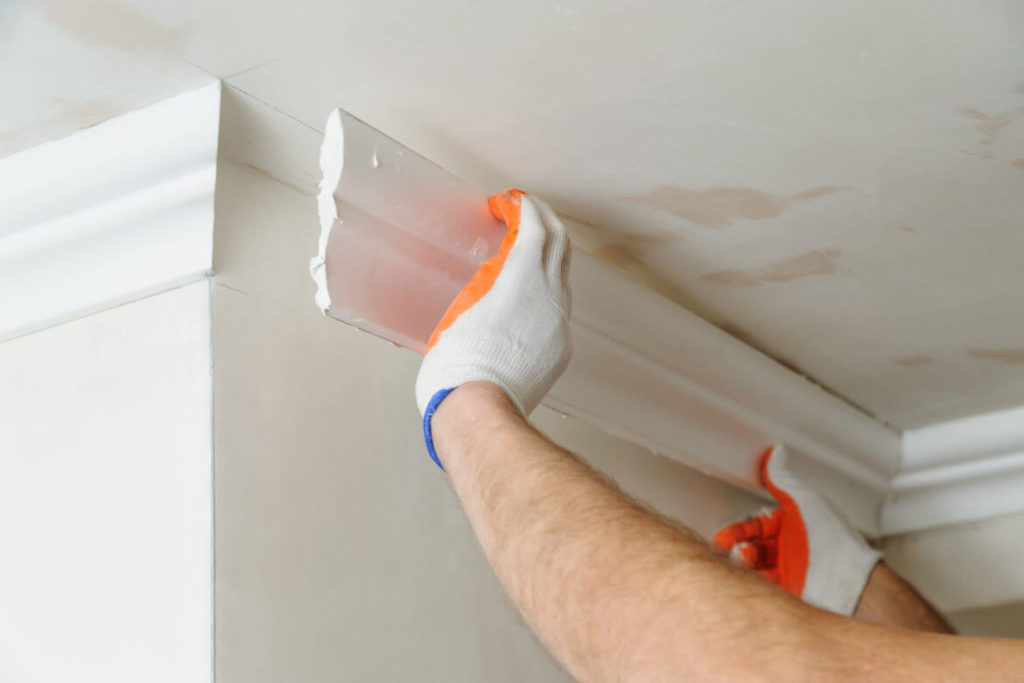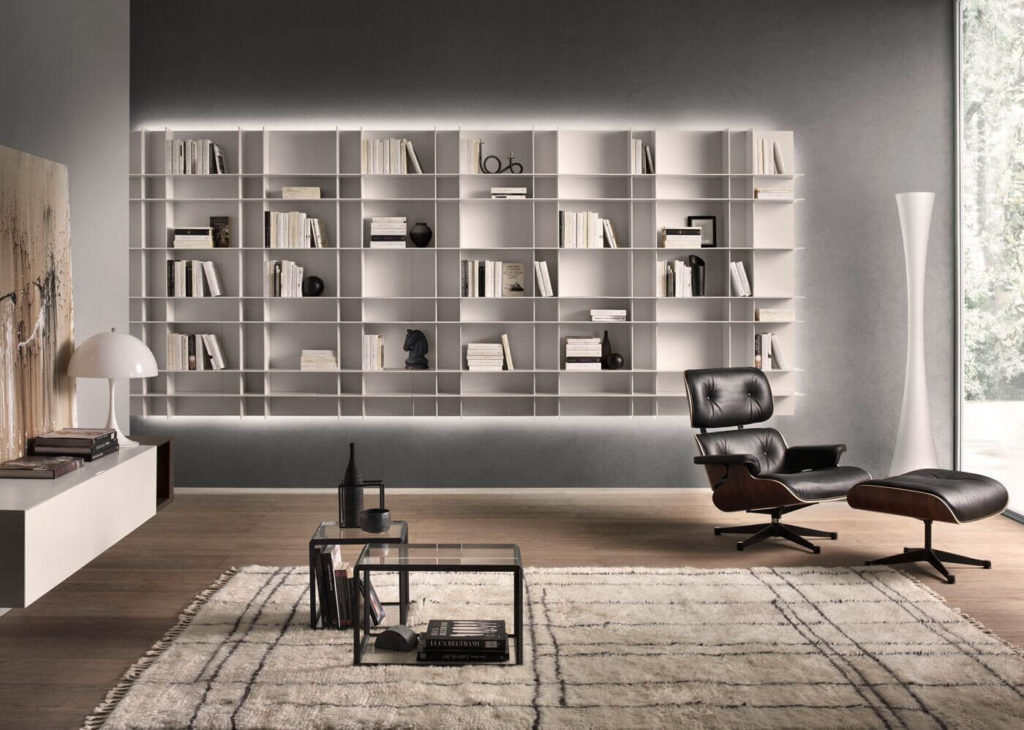If you’ve watched enough HGTV in your lifetime, you might know a thing or two about crown molding. It adds some visual elegance to any room, and many homeowners see it as a bonus when it comes to house hunting. But aside from it being something that looks nice in a home, what is crown molding, exactly?
What Is Crown Molding?

When you see homeowners on HGTV fawn over crown molding, there’s a reason why. As This Old House puts it, “In the world of trim, crown is king.” That’s because it provides a transition between the walls and the ceiling. You will also see it above casings, baseboards, and even door frames. It’s known for elegant curves and angles, and it draws the eye up to the ceiling and helps highlight other design and decor features.
According to This Old House, crown molding’s origins can be traced back to the ancient Greeks, who created some of the design rules and proportions that we use today. While the Greeks used heavy stone, 18th-century American craftsmen went with plaster or wood — both of which are more malleable, lightweight, and inexpensive.
Here’s another fun fact about crown molding: Although it seems purely decorative today, it was originally installed to cover gaps where different building materials came together, according to an article by Remodelista. There always is a space where walls and ceilings intersect, and that’s how ceiling molding came to be.
What Are the Benefits of Crown Molding?

When it comes to crown molding’s benefits, it really is simple: It’s simple yet elegant, a true nod to its name. It looks clean, it adds dimension and angles to any wall or doorframe, and modern crown molding is something that many potential buyers look for in their new homes.
And while crown molding still serves its original purpose of covering the space where the walls and ceiling meet, it also helps elevate your space and make the ceiling feel higher than it actually is.
What Is Crown Molding Made Of?
The ancient Greeks might have created their crown molding from stone, but most builders today opt for materials that are more malleable and lighter in weight. This includes plaster and wood crown molding. Some even make crown moldings out of plaster-covered foam. Crown molding also can be made of polyurethane foam or flexible polyurethane.
Flexible polyutherane is not as lightweight an option as others, but it cuts like wood and offers some flexibility. Polyutherane looks like plaster but is lightweight and doesn’t require professional installation, according to This Old House. For a DIY-friendly option, homeowners can choose crown molding made from plaster-covered foam — it’s light and flexible like wood, and it’s as seamless as plaster.
How to Install Crown Molding

Whether you choose to DIY crown wall moldings or have a professional do it, it’s imperative that you choose the right material for your taste and purpose — and that it’s installed correctly.
Also, knowing some molding terminology certainly is helpful — for example, what are crown molding corner blocks and baseboard corner blocks? Often called trim blocks, these are square, flat blocks of wood that are placed at the upper corners on each side of a doorframe. They’re often elegantly carved to mesh well with the rest of the crown moldings being installed, and give the framing an overall seamless look.
If you’re set on installing crown molding yourself, use the following tips from HGTV. The materials you might need include but aren’t limited to crown molding, nails, paintable caulk, caulk gun, miter saw, coping saw, ladder, tape measure, hammer, and safety glasses. The general steps are as follows:
- Determine which type of crown molding to use.
- Cut the corners of the molding.
- Measure and mark the wall.
- Cut the first measured piece.
- Cut the next piece to fit an inside corner.
- Understand how the pieces fit together.
- Cut the molding at a 45-degree angle.
- Cope the joint.
- Check the fit.
- Attach the molding to the wall.
- Make miter cuts for the outside corners.
- Use optional corner blocks.
For more detailed explanations, check out HGTV’s full article on how to install crown molding.
Cost to Install Crown Molding

As with many other types of home renovations, the price is always a significant factor, and unfortunately, it’s hard to pin down a precise cost with the number of factors that go into renovating. There is no clear cost to install crown molding, but rather it depends on the materials you choose, how much you need of them, and the cost of labor if you decide to have a professional install crown molding for you.
To figure out how much molding you’ll need, This Old House recommends measuring the perimeter of the room and then adding 10% to 15% for waste. For rooms with lots of corners, add 20%. Wood and plaster tend to be the most expensive options, with plaster-covered foam and polyurethane tending to be the more budget-friendly materials.
What Are Modern Trends In Crown Molding?

Crown molding is both timeless and contemporary, and there are ways to make it fit into your home seamlessly. Here are a few of the top trends when it comes to modern crown molding.
- Baseboard Styles. Crown molding looks great on walls and door frames, but don’t forget your baseboards, too. Baseboard styles are usually simple, and accented with a small piece of semi-circular trim, according to Bob Vila.
- Pretty Patterns. Crown molding is known for its timeless elegance, but it also doesn’t have to make your home look like ancient Greece. Pick moldings with fun patterns, like chevrons or other custom moldings.
- Lighted Crown Moldings. These two-piece crown molding systems make for a soft, ambient glow throughout your home. The lights in the lower molding project upward, illuminating the upper piece. These also would look great with high-quality wall units, such as these from PEDINI Miami.
- Curvature. Moldings aren’t just for your standard rectangular rooms. Flexible polyurethane molding is just that — flexible, and it’s excellent for curved rooms.
- Removable Crown Molding. Hollow PVC crown molding also is available, and it’s great for when you want to run new wiring throughout your home but don’t want to have to rip up walls.
How to Pick the Best Crown Molding For Your Home
Again, the best crown molding for your home will be dependent on several factors, including your personal taste, the look you are going for, budget, and how much space you have. Do your research online first, and find a trusted home design or molding expert to help you with choosing the best modern crown molding for your home. If you’re in the Miami area, PEDINI Miami is one such leading expert in home design and can help point you in the right direction.
